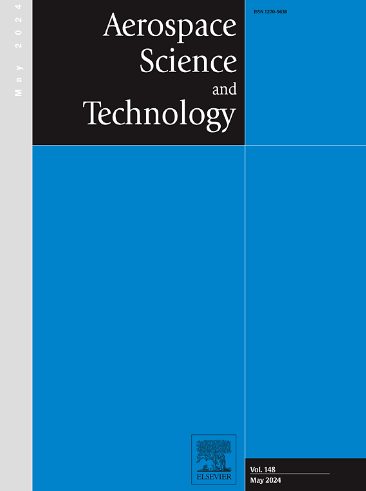飞行马赫数为 7 的节流辅助超音速燃烧器的可靠燃烧策略
IF 5
1区 工程技术
Q1 ENGINEERING, AEROSPACE
引用次数: 0
摘要
随着飞行马赫数的增加,喷气发动机很难实现稳定燃烧。本研究为以煤油为燃料的超音速燃烧器开发了一种可靠的燃烧策略。在空气节流的辅助下,该燃烧器能够在飞行马赫数为 7 时高效运行。采用基于雷诺平均纳维-斯托克斯方程的三维数值方法来分析空气节流对非反应流场和反应流场的影响。整个燃烧试验被有效地分为五个过程,包括非反应流的建立、点火、火焰稳定和熄火。对实验流场和数值流场的分析表明,作为燃烧器中初始火焰的起源,空气节流引起的空气动力压缩促进了煤油/空气亚混合区。主混合过程通过斜坡和空腔的布置得到加强,这有助于有效的多通道喷射。可观察到两种燃烧模式,即空腔剪切层/再循环联合稳定燃烧和喷射翼稳定燃烧。在反应流场中,额外注入节流气体提高了推力增强效果,但代价是降低了燃烧强度。出口燃烧效率和总压恢复系数分别降低了 8.49% 和 28.79%。本文章由计算机程序翻译,如有差异,请以英文原文为准。
A reliable combustion strategy for a throttling-assisted supersonic combustor with flight Mach 7
As the flight Mach number increases, scramjet engines struggle to achieve stabilized combustion. In the present investigation, a reliable combustion strategy is developed for a kerosene-fueled supersonic combustor. Assisted by air throttling, this enables the combustor to operate efficiently at a flight Mach number of 7. Various experimental measurement techniques are used to capture the combustion process and flow characteristics. A three-dimensional numerical method based on the Reynolds-averaged Navier–Stokes equations is employed to analyse the effects of air throttling on the non-reacting and reacting flow fields. The whole combustion test is effectively divided into five processes covering the establishment of non-reacting flow, ignition, flame stabilization, and flameout. Analysis of the experimental and numerical flow fields indicates that, as the origin of the initial flame in the combustor, the aerodynamic compression induced by air throttling promotes the kerosene/air sub-mixing region. The main mixing process is enhanced by the arrangement of ramps and cavity, which contribute to effective multi-channel injection. Two combustion modes are observed, namely combined cavity shear-layer/recirculation stabilized combustion and jet-wake stabilized combustion. In the reacting flow field, the additional injection of throttling gas improves the thrust augmentation at the cost of reduced combustion intensity. The outlet combustion efficiency and total pressure recovery coefficient are found to decrease by 8.49% and 28.79%, respectively.
求助全文
通过发布文献求助,成功后即可免费获取论文全文。
去求助
来源期刊

Aerospace Science and Technology
工程技术-工程:宇航
CiteScore
10.30
自引率
28.60%
发文量
654
审稿时长
54 days
期刊介绍:
Aerospace Science and Technology publishes articles of outstanding scientific quality. Each article is reviewed by two referees. The journal welcomes papers from a wide range of countries. This journal publishes original papers, review articles and short communications related to all fields of aerospace research, fundamental and applied, potential applications of which are clearly related to:
• The design and the manufacture of aircraft, helicopters, missiles, launchers and satellites
• The control of their environment
• The study of various systems they are involved in, as supports or as targets.
Authors are invited to submit papers on new advances in the following topics to aerospace applications:
• Fluid dynamics
• Energetics and propulsion
• Materials and structures
• Flight mechanics
• Navigation, guidance and control
• Acoustics
• Optics
• Electromagnetism and radar
• Signal and image processing
• Information processing
• Data fusion
• Decision aid
• Human behaviour
• Robotics and intelligent systems
• Complex system engineering.
Etc.
 求助内容:
求助内容: 应助结果提醒方式:
应助结果提醒方式:


